 Welcome to Circus of the Spineless #12! Given that this completes the first full year of the Circus, I decided to reflect for a bit on what makes this circus better than other circuses. Afterall, we've all been to the circus before. Why should people attend the Circus of the Spineless when there are so many others to choose from? Below I'm going to compare our attractions to those of a normal circus, and hopefully show why our circus is better. And that means that money spent at the Circus of the Spineless (you did pay your $40 admission fee, right?) is money well spent indeed. Here goes...
Welcome to Circus of the Spineless #12! Given that this completes the first full year of the Circus, I decided to reflect for a bit on what makes this circus better than other circuses. Afterall, we've all been to the circus before. Why should people attend the Circus of the Spineless when there are so many others to choose from? Below I'm going to compare our attractions to those of a normal circus, and hopefully show why our circus is better. And that means that money spent at the Circus of the Spineless (you did pay your $40 admission fee, right?) is money well spent indeed. Here goes...
Normal Circus: Flying trapeze.
Our Circus: Flying ants.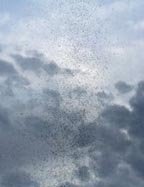 Tortoise Trail shows us some pictures of a massive swarm of ants, so thick they look like a big flock of birds. Clearly more fun to watch than the flying trapeze. And when was the last time you saw trapeze artists having sex in mid-air? Our circus is clearly superior on that score.
Tortoise Trail shows us some pictures of a massive swarm of ants, so thick they look like a big flock of birds. Clearly more fun to watch than the flying trapeze. And when was the last time you saw trapeze artists having sex in mid-air? Our circus is clearly superior on that score.
Normal Circus: Asian Elephant Poop
Our Circus: Costa Rican Film Loop
Enter the Naturally Connected tent, and you'll find not just one picture, but bunches organized together into a film loop. This loop contains pictures of insects taken from her trip to Costa Rica, including some awesome stick insects and mantids. Now isn't that more fun than looking at elephant crap?
Normal Circus: Trained Lions
Our Circus: Trained Aphids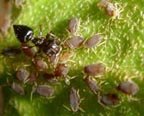 Henry's Webiocosm presents us some adorable pictures and a discussion about some aphids found in his yard. These aphids are trained by their ant protectors to secrete sugary honeydew from their rear end when stimulated. The ants get a nice meal, and the aphids in turn are kept free of predators and parasites. Now, how many animal trainers do you know who can get a lion to secrete a delicious meal out of its ass on cue? Precious few I'll bet.
Henry's Webiocosm presents us some adorable pictures and a discussion about some aphids found in his yard. These aphids are trained by their ant protectors to secrete sugary honeydew from their rear end when stimulated. The ants get a nice meal, and the aphids in turn are kept free of predators and parasites. Now, how many animal trainers do you know who can get a lion to secrete a delicious meal out of its ass on cue? Precious few I'll bet.
And while you're at it, check out the development of a larval mud dauber as it devours its caterpillar prey. Mud dauber nests kind of remind me of peanuts, but I can't think of any circus angle here.
Normal Circus: Caricature Artist
Our Circus: Paleo-artist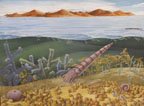 You know that guy who draws silly caricatures that make you look stupid, and then charges you 10 bucks for the humiliation? Well we've done them one better. Our artist, Carel P. Brest van Kempen of Rigor Vitae, draws pictures of long extinct invertebrates from the primordial seas. His latest masterpiece, showing critters of the Ordovician, beats the hell out of any 5 minute caricature. I hear that the creatures presented therein are highly pleased with the results, but no word on when they're forking over payment.
You know that guy who draws silly caricatures that make you look stupid, and then charges you 10 bucks for the humiliation? Well we've done them one better. Our artist, Carel P. Brest van Kempen of Rigor Vitae, draws pictures of long extinct invertebrates from the primordial seas. His latest masterpiece, showing critters of the Ordovician, beats the hell out of any 5 minute caricature. I hear that the creatures presented therein are highly pleased with the results, but no word on when they're forking over payment.
Normal Circus: Lumbering Elephant
Our Circus: Aquatic Worm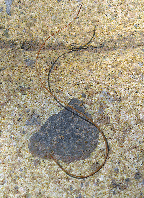 Sure, a normal circus can do big. But when it comes to small, we've got them beat. Days Between Stations shows us some pictures of a cute (and unidentified, someone help us out here) aquatic worm, presumably a nematode of some sort. But that's not all. Order now and at no extra charge, you also receive not one, but two extra invertebrates, a butterfly and a forest spider. What normal circus could ever guarantee that?
Sure, a normal circus can do big. But when it comes to small, we've got them beat. Days Between Stations shows us some pictures of a cute (and unidentified, someone help us out here) aquatic worm, presumably a nematode of some sort. But that's not all. Order now and at no extra charge, you also receive not one, but two extra invertebrates, a butterfly and a forest spider. What normal circus could ever guarantee that?
Normal Circus: Bengal Tiger
Our Circus: Tiger Swallowtail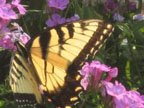 A DC Birding Blog (yeah, I know, birds) has some pictures of butterflies taken from the National Arboretum. Included are the Eastern Tiger Swallowtail and the Monarch, mightiest of butterflies. Unfortunately, he was unable to get them to jump through flaming hoops, though I do hear that he successfully stuck his head in one of their mouths.
A DC Birding Blog (yeah, I know, birds) has some pictures of butterflies taken from the National Arboretum. Included are the Eastern Tiger Swallowtail and the Monarch, mightiest of butterflies. Unfortunately, he was unable to get them to jump through flaming hoops, though I do hear that he successfully stuck his head in one of their mouths.
Can't get enough Tiger Swallowtails? 10,000 Birds has another great photograph of the beast. But I have to wonder, given the usual subject matter of these blogs, if there may be some confusion among these guys as to the phylogenetic placement of lepidopterans
Normal Circus: Wooden Puppet Show
Our Circus: Invertebrate Shadow Puppet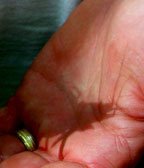 Rurality presents us with something sure to thrill the kiddies. An invertebrate shadow puppet, making cool shapes with its appendages. See if you can guess what it is. No peeking, the kids will be awfully disappointed if you give it away. You'll have to scroll down the page at Rurality's tent to discover the secret.
Rurality presents us with something sure to thrill the kiddies. An invertebrate shadow puppet, making cool shapes with its appendages. See if you can guess what it is. No peeking, the kids will be awfully disappointed if you give it away. You'll have to scroll down the page at Rurality's tent to discover the secret.
Normal Circus: Candied Apples
Our Circus: Caterpillar Infested Apples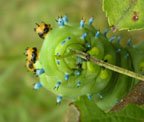 Over in the Thomasburg Walks tent, you'll find some pictures and descriptions of a gorgeous Cecropia caterpillar munching on a McIntosh apple tree. Now why would anyone want one of those sticky, tooth-decay-inducing candied apples that you get at a normal circus when you get caterpillars at ours?
Over in the Thomasburg Walks tent, you'll find some pictures and descriptions of a gorgeous Cecropia caterpillar munching on a McIntosh apple tree. Now why would anyone want one of those sticky, tooth-decay-inducing candied apples that you get at a normal circus when you get caterpillars at ours?
And you get a bonus. While you can play skee ball and win a teddy bear at a normal circus, at our circus you can have a teddy bear bee free of charge when you buy any caterpillar infested apple tree. What a bargain.
Normal Circus: Bearded Lady
Our Circus: Hermaphroditic Snail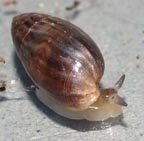 Maybe the bearded lady has had a bit too much testosterone, but what circus goes all the way and gives us hermaphrodites? The Circus of the Spineless, that's who. The aptly named Snail's Tales presents to us Melampus bullaoides, a hermaphroditic species of snail. Feel free to taunt and jeer at it, but please don't tell it go f-itself. S/he's heard that one a million times.
Maybe the bearded lady has had a bit too much testosterone, but what circus goes all the way and gives us hermaphrodites? The Circus of the Spineless, that's who. The aptly named Snail's Tales presents to us Melampus bullaoides, a hermaphroditic species of snail. Feel free to taunt and jeer at it, but please don't tell it go f-itself. S/he's heard that one a million times.
Normal Circus: Cheese Fries
Our Circus: Dragon Flies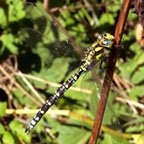 Words and Pictures presents us with one of our main attractions, a dragon fly known as a southern hawker. Dragon flies are voracious predators, whereas cheese fries are helpless prey. I know which one I'd rather have on my side.
Words and Pictures presents us with one of our main attractions, a dragon fly known as a southern hawker. Dragon flies are voracious predators, whereas cheese fries are helpless prey. I know which one I'd rather have on my side.
But it gets better. Urban Dragon Hunters has two posts up on those insects that are so badass, they are named after a mythical death reptile. The first one showcases some Darners and a Hungarian Horntail Eastern Forktail. And the second post has too many species to list.
Can't get enough dragon flies? Too bad. Research at a Snail's Pace (is there a different kind?) has great picture of one as well.
Normal Circus: Knife Thrower
Our Circus: Pinching Bug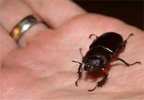 At least the knife thrower tries to miss. The pinching bug, on the other hand, is not something I'd be holding in my bare hands. Bootstrap Analysis has pictures of the pinching bug along with several other insect friends: A pseudo-katydid, a leaf-footed bug, and some milkweed tussock moth larvae. The pinching bug, as it turns out, was originally thought to be dead, until it got its revenge. Then it was put outside, still alive. Suckers.
At least the knife thrower tries to miss. The pinching bug, on the other hand, is not something I'd be holding in my bare hands. Bootstrap Analysis has pictures of the pinching bug along with several other insect friends: A pseudo-katydid, a leaf-footed bug, and some milkweed tussock moth larvae. The pinching bug, as it turns out, was originally thought to be dead, until it got its revenge. Then it was put outside, still alive. Suckers.
Normal Circus: Animal Feces
Our Circus: Invasive Species
Why go to a normal circus and see animal dung everywhere when you can enjoy a far more serious ecological disaster? The Invasive Species Weblog tells us of the emerald ash borer, a species of beetle that is attacking, you guessed it, ash trees. On top of it all, they've also got a cool photo of leaf cutter ants.
Normal Circus: "And Now, The Moment You've All Been Waiting For..."
Our Circus: Crayfish Spermatophore
 Over at David Nelson's Photoblog we're treated to not one, not two, but four posts on cool critters, the best of which is a blue (yes, blue) crayfish. This animal is being kept as an aquarium pet and/or potential meal. And then there's the homeless bee, so named because it's from Australia. It too is blue. And then there are the tiny temnocephalan flatworms. I suppose they're transparent, but the high magnification makes them look blue. And finally, we've got a Net-Casting Spider, who makes a net of bluish silk.
Over at David Nelson's Photoblog we're treated to not one, not two, but four posts on cool critters, the best of which is a blue (yes, blue) crayfish. This animal is being kept as an aquarium pet and/or potential meal. And then there's the homeless bee, so named because it's from Australia. It too is blue. And then there are the tiny temnocephalan flatworms. I suppose they're transparent, but the high magnification makes them look blue. And finally, we've got a Net-Casting Spider, who makes a net of bluish silk.Normal Circus: Clowns
Our Circus: Clowns
 The Bird Chaser went on a recent excursion and found numerous invertebrates, including crabs and sea stars. He seems to think that the value of these critters is for bird food, but why on Earth any bird would want to eat these things, I don't really know. Check out the Blood Star (pictured on left). It's got a hideous and hairy growth protruding from it, so large that few birds could eat it even if they were willing to risk the humiliation.
The Bird Chaser went on a recent excursion and found numerous invertebrates, including crabs and sea stars. He seems to think that the value of these critters is for bird food, but why on Earth any bird would want to eat these things, I don't really know. Check out the Blood Star (pictured on left). It's got a hideous and hairy growth protruding from it, so large that few birds could eat it even if they were willing to risk the humiliation.Normal Circus: "Ladies And Gentlemen And Children Of All Ages..."
Our Circus: Rocks Of Ages
 The Hairy Museum of Natural History (the name makes perfect sense after you've had your third crack rock) has dug up some Permian insects for our enjoyment. The area of interest here contains 290 million year old rocks in the Robledos Mountains. And there you'll find insect tracks galore, including some made by ancient insects known as monurans, which means "one tail" in Swahili. Looking at these guys and noting their striking similarity to more primitive arthropods, I could almost buy into that whole evolution myth.
The Hairy Museum of Natural History (the name makes perfect sense after you've had your third crack rock) has dug up some Permian insects for our enjoyment. The area of interest here contains 290 million year old rocks in the Robledos Mountains. And there you'll find insect tracks galore, including some made by ancient insects known as monurans, which means "one tail" in Swahili. Looking at these guys and noting their striking similarity to more primitive arthropods, I could almost buy into that whole evolution myth.Our Circus: Giant Isopod And Midgets
 Deep Sea News has a post about the Island Rule -- the fact that species tend to evolve into giants or midgets when isolated on islands -- applied to the deep sea. One animal whose giantism needs to be explained is the deep-sea giant isopod Bathynomus giganteus. One of my profs used to have a freeze-dried giant isopod on a shelf in the classroom, and its hideous visage provided me with the strength I needed to make it through the day.
Deep Sea News has a post about the Island Rule -- the fact that species tend to evolve into giants or midgets when isolated on islands -- applied to the deep sea. One animal whose giantism needs to be explained is the deep-sea giant isopod Bathynomus giganteus. One of my profs used to have a freeze-dried giant isopod on a shelf in the classroom, and its hideous visage provided me with the strength I needed to make it through the day.But that's not all. There's more isopod to be had with DSN's visit to the London Museum of Natural History (no word on its hair status). There you will find giant isopod and giant cephalopod. Then there's the post about where deep-sea organisms come from. And one about sea spiders. Maybe you should just read the whole archive over there.
Normal Circus: Guy Who Guesses Your Age
Our Circus: Bumble Bee Who Guesses Time Intervals
The Blog Around the Clock tells us about some new research on how bumble bees can estimate time so that they can return to flowers after they've had enough time to replenish their nectar. Additionally, he has a post about invertebrate neuronal development.
Well that does it for Circus of the Spineless #12, and for the first full year of the Circus. I hope you've enjoyed the attractions, and will come back to see us next time we're in town. We'll kick off year two of Circus of the Spineless at Deep Sea News. Make sure to send them your submissions for September's Circus and help keep it the greatest show on Earth.
